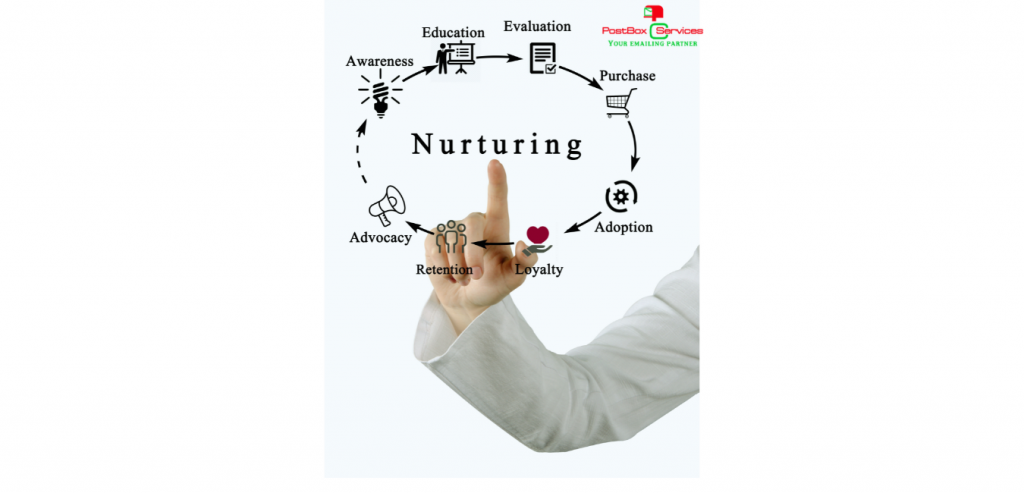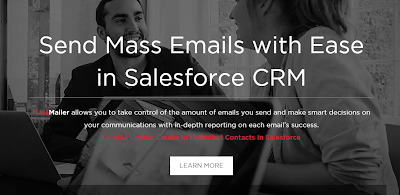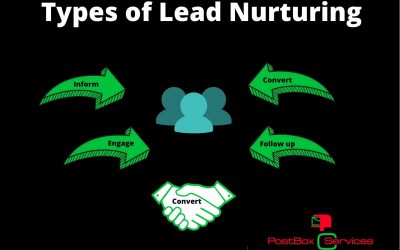What and How of Lead Nurturing
What is lead nurturing?
Lead Nurturing Introduction: When someone is interested in your brand, chances are they will opt-in and share enough information about themselves to become a qualified lead. Once they do so, you will then send them campaigns that speak to them individually which helps build a relationship with them.
This relationship-building aspect of it is what is known as lead nurturing. However, according to Marketo, oftentimes these leads are not yet ready to make a purchase. Even MarketingSherpa’s report states that almost 80% of new leads never end up purchasing at all. But don’t worry, nurturing is rarely about making an immediate sale – it’s about the long game.
Lead nurturing is about curating content that will inspire and engage, and sharing what your brand is all about.

Why is lead nurturing important?
- Make immediate contact
As soon as someone signs up or opt-in to your newsletter or inquires about your product, it allows you to quickly establish contact with your leads.
- Build a relationship
People like to know they’re buying from people, not a big corporation they can’t put a face on. When someone chooses to hear from you, this is your opportunity to show them what your brand is all about and connect with them.
- Maintain presence
According to a study conducted by Genius.com, 66% of buyers stated that “consistent and relevant communication provided by both sales and marketing organizations” helps them decide to buy
- Discover pain points
Take a closer look at your campaigns and see which works best, how they respond to the content, and what they don’t respond to. This will help you learn more about your customers, their pain points, desires, and challenges they are facing.
- Identify segmentation
The more you learn about your customers, the easier it is for you to segment them. This makes for better communication as you are serving them what they are interested in instead of bombarding them with the information they have absolutely no interest in
- Navigate engagement
Based on interactions, you will be able to know when a customer is interested and continue to engage them or when they have dropped out so you can retarget them.
Now that you have covered the importance of lead nurturing, let us dive into how lead nurturing works.
How does lead nurturing work?

Step 1: Score your leads
Lead nurturing always starts with lead scoring – a way in which you identify where your leads sit within the sales cycle. You may use lead scoring tools available online to help determine the demographic and behavioral data of your leads.
Step 2: Define your ideal buyer
You can only market to who you know. As such, define the perfect buyer, come up with a buyer persona so you can determine which lead nurturing campaign to deploy.
Step 3: Create your lead nurturing strategy
Once you have identified your ideal customer, create a strategy that will communicate what you wish to offer these leads.
Step 4: Assess results
Evaluate the data and look into how these leads engage with your content. Look into open rates and click-through rates. Analyze all data available to figure out trouble areas, provide new solutions or revise communication where needed.
How to create a lead nurturing strategy
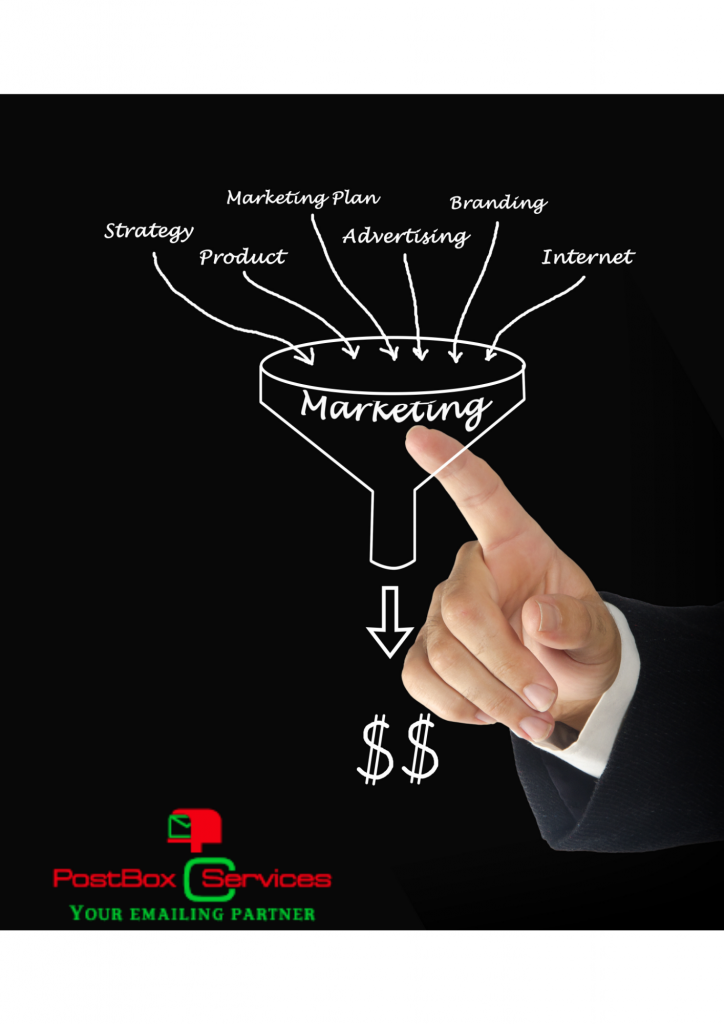
Having a strategy in place is important and will help curate the right content for the type of leads you are interested in.
Follow these steps to create your own lead nurturing strategy.
Step 1: Define your goals
Define what you are looking to get out of this, who you are targeting and the type of content you want these leads to receiving.
Step 2: Setup an automation process
Using an automation tool will simplify the whole process.
Step 3: Collect data
To make things effective, you should gather as much information about your target buyers and what they require at each touchpoint of the journey. A simple keyword search can go a long way.
Step 4: Curate a content plan
Coming up with a lead nurturing content plan helps keep things and timelines in place. It will also help everyone know what content is to be deployed at each touch point.
Step 5: Email triumphs all
Communicate via email as it offers the most ROI when compared to other marketing tactics and makes it easier to segment and target customers.
Step 6: Analyze
After all is said and done, track various metrics to know if everything is going as planned or if anything should be tweaked. Always analyze and optimize.
Lead nurturing tips
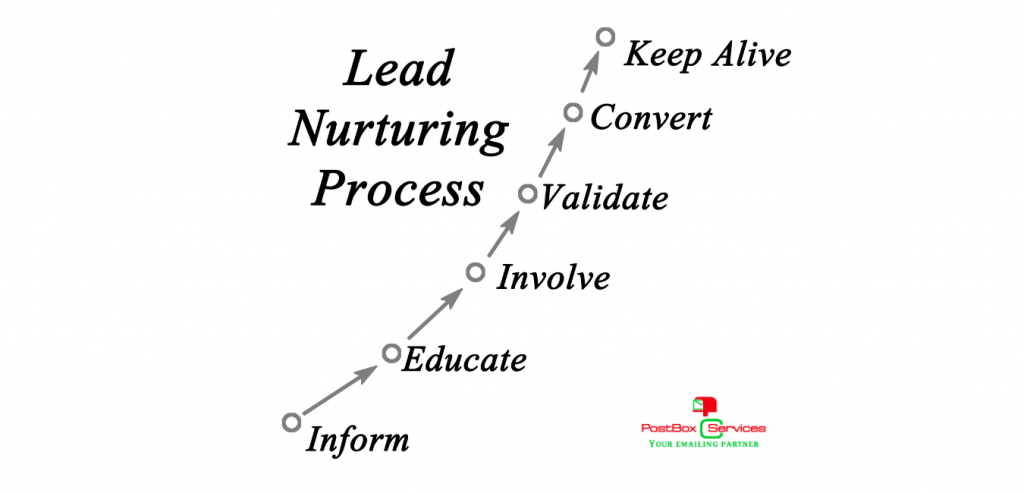
- Define your buyer persona
Who is your ideal customer? A buyer persona helps you define who that is. It involves creating a fictional customer that best represents your target audience. This will help you understand your customer and figure out the proper strategy and techniques on how to acquire and retain them. It will require you to list down their gender, age, location, needs, interests, pain points, desires, and even budget. Knowing all this can help you provide them with a solution to their problem.
- Outline your buyers’ journey: An overview of your ideal customer’s buying journey helps you understand their behaviour at each stage. This will enable you to provide valuable information at each stage.
- Personalize content for each stage in the buyer’s journey
Valuable and relevant content is important to nurture your leads effectively. Creating content for each stage will help educate your lead and move them further down the sales funnel.

Regardless of whether you are a small, medium, or large business, you can benefit from the relationships formed through lead nurturing campaigns.
You can talk about who your company is and how you can help them when a new lead signs up for your marketing communications. Use this to your advantage to build a long-lasting relationship with them. Remember that every step in a nurturing campaign should always invite your leads to engage with your brand. Think long-term – you are not looking to make a quick buck out of these leads, but rather have them be loyal brand members.
In conclusion, remember to define your ideal customer, prepare your lead nurturing strategy, deploy an email marketing automation software, send out quality and relevant content and analyze and optimize.
